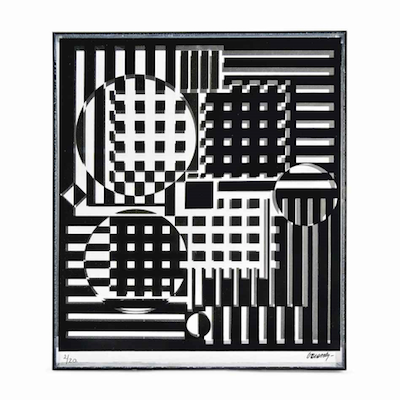
Details
Artist
Styles
Box with light bulbs and changing colors (metal, plexi, lights and motor)
Couleurs en diffusion B, 1969
form
Medium
Size
35 x 33 X 17.5 cm
- Inches
- Centimeters
Edition
Price
Details
Artist
Styles
Box with light bulbs and changing colors (metal, plexi, lights and motor)
What is Op Art?
Op Art is a visual art style that uses optical illusions to create the impression of movement, vibrating patterns, flashing, or hidden images. The works are typically abstract, with many well-known pieces in black and white. The roots of Op Art can be traced back to earlier movements like Futurism, Constructivism, Dada, and Neo-Impressionism, particularly in their use of color effects and graphic design.














